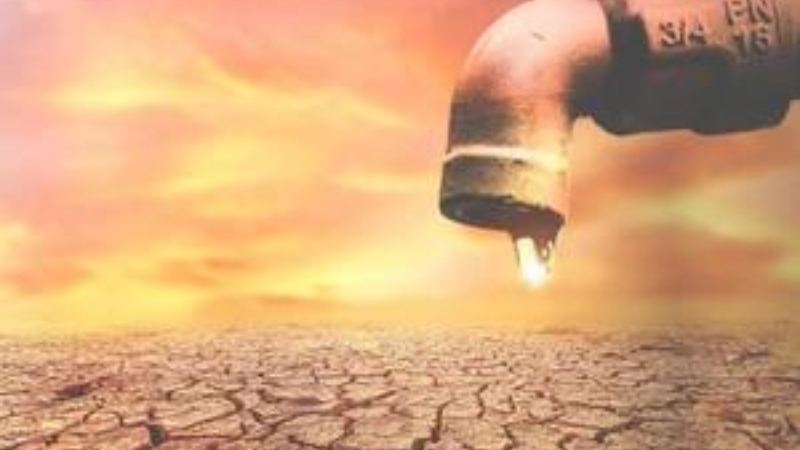
South India faces shocking water shortage in its reservoirs
A bulletin by CWC shows stark reality, Comparatively
The eastern region is doing much better
In a recent bulletin released by the Central Water Commission (CWC), alarming statistics have emerged regarding the water storage levels in the southern region of India. The bulletin revealed that reservoirs across five states, namely Andhra Pradesh, Telangana, Karnataka, Kerala, and Tamil Nadu, are currently at a mere 17% of their total capacity. This stark reduction in water storage, amounting to only 8.865 BCM (billion cubic meters) out of a total capacity of 53.334 BCM, has raised significant concerns about worsening water scarcity in the region.
Also Read: Karnataka: Even as Centre releases drought relief, BJP lampoons Siddaramaiah’s govt #ATMSarkara
Comparisons with historical averages paint a grim picture, with storage levels plummeting well below both last year’s figures (29%) and the ten-year average (23%). This decline in water availability poses imminent challenges for irrigation, drinking water supply, and hydroelectric power generation in the affected states.
While the southern region grapples with dwindling water resources, there are contrasting reports from the eastern region. States such as Assam, Odisha, and West Bengal have shown improvements in water storage levels, with 39% of total capacity currently filled, compared to 34% last year.
However, the situation remains dire in other parts of the country. The western, northern, and central regions all exhibit declines in water storage levels compared to historical averages, indicating a widespread water scarcity issue.
The bulletin’s broader analysis categorizes reservoir storage across various river basins, revealing a patchy distribution of water resources. While some basins like Brahmaputra boast better-than-normal storage levels, others like the Cauvery basin are classified as highly deficient.
As the nation grapples with uneven water distribution and looming water scarcity, urgent measures are needed to mitigate the impact on agriculture, livelihoods, and overall economic stability in the affected regions.

South India faces shocking water shortage in its reservoirs
A bulletin by CWC shows stark reality, Comparatively
The eastern region is doing much better
In a recent bulletin released by the Central Water Commission (CWC), alarming statistics have emerged regarding the water storage levels in the southern region of India. The bulletin revealed that reservoirs across five states, namely Andhra Pradesh, Telangana, Karnataka, Kerala, and Tamil Nadu, are currently at a mere 17% of their total capacity. This stark reduction in water storage, amounting to only 8.865 BCM (billion cubic meters) out of a total capacity of 53.334 BCM, has raised significant concerns about worsening water scarcity in the region.
Also Read: Karnataka: Even as Centre releases drought relief, BJP lampoons Siddaramaiah’s govt #ATMSarkara
Comparisons with historical averages paint a grim picture, with storage levels plummeting well below both last year’s figures (29%) and the ten-year average (23%). This decline in water availability poses imminent challenges for irrigation, drinking water supply, and hydroelectric power generation in the affected states.
While the southern region grapples with dwindling water resources, there are contrasting reports from the eastern region. States such as Assam, Odisha, and West Bengal have shown improvements in water storage levels, with 39% of total capacity currently filled, compared to 34% last year.
However, the situation remains dire in other parts of the country. The western, northern, and central regions all exhibit declines in water storage levels compared to historical averages, indicating a widespread water scarcity issue.
The bulletin’s broader analysis categorizes reservoir storage across various river basins, revealing a patchy distribution of water resources. While some basins like Brahmaputra boast better-than-normal storage levels, others like the Cauvery basin are classified as highly deficient.
As the nation grapples with uneven water distribution and looming water scarcity, urgent measures are needed to mitigate the impact on agriculture, livelihoods, and overall economic stability in the affected regions.
